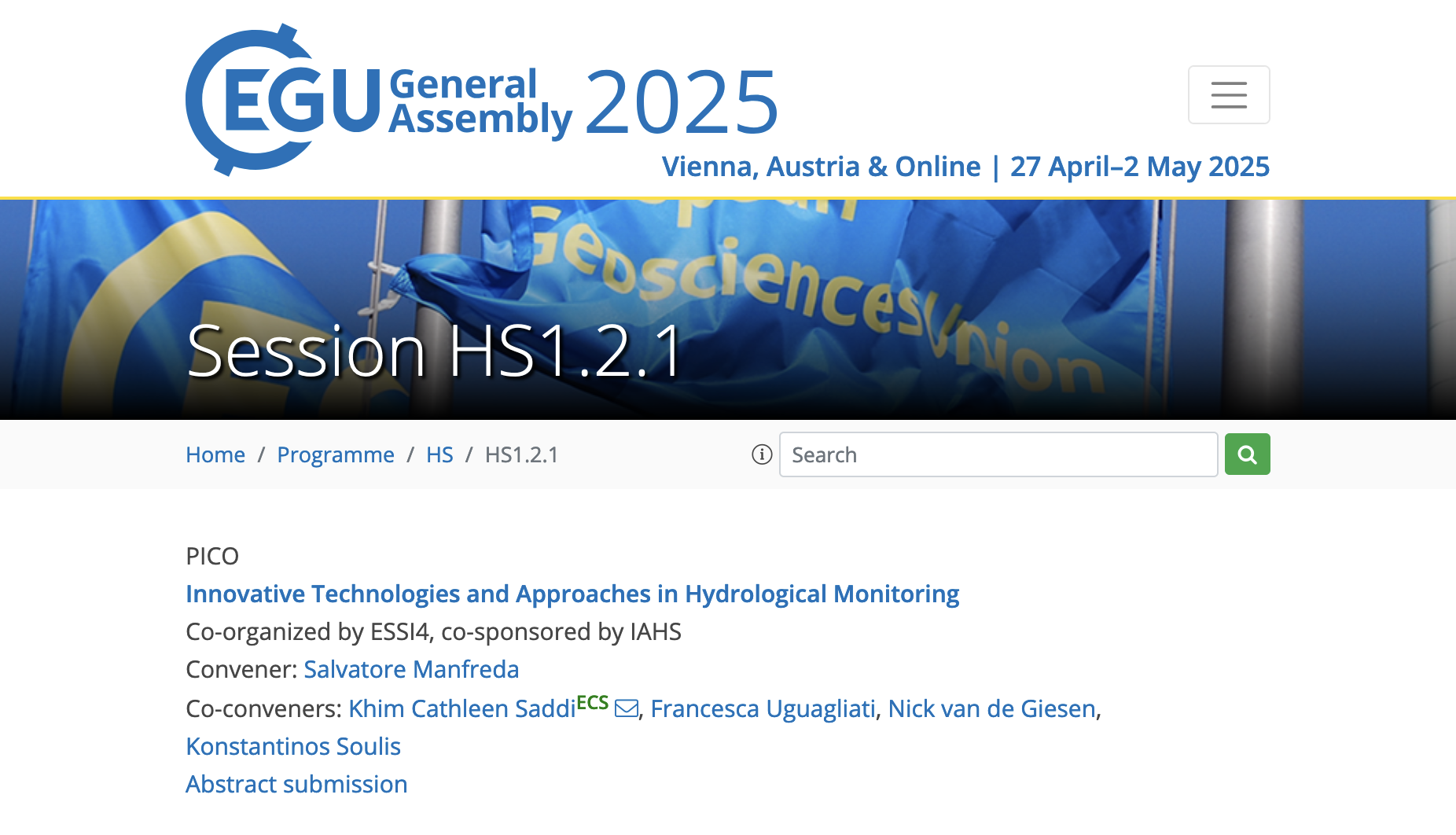Co-organized by ESSI4, co-sponsored by IAHS
Convener: Salvatore Manfreda
Co-conveners: Khim Cathleen SaddiECS, Francesca Uguagliati, Nick van de Giesen, Konstantinos Soulis
Effective and enhanced hydrological monitoring is essential for understanding water-related processes in our rapidly changing world. Image-based river monitoring has proven to be a powerful tool, significantly improving data collection, analysis, and accuracy, while supporting timely decision-making. The integration of remote and proximal sensing technologies with citizen science and artificial intelligence has the potential to revolutionize monitoring practices. To advance this field, it is vital to assess the quality of current research and ongoing initiatives, identifying future trajectories for continued innovation.
We invite submissions focused on hydrological monitoring utilizing advanced technologies, such as remote sensing, AI, machine learning, Unmanned Aerial Systems (UAS), and various camera systems, in combination with citizen science. Topics of interest include, but are not limited to:
• Disruptive and Innovative sensors and technologies in hydrology.
• Advancing opportunistic sensing strategies in hydrology.
• Automated and semi-automated methods.
• Extraction and processing of water quality and river health parameters (e.g., turbidity, plastic transport, water depth, flow velocity).
• New approaches to long-term river monitoring (e.g., citizen science, camera systems—RGB/multispectral/hyperspectral, sensors, image processing, machine learning, data fusion).
• Innovative citizen science and crowd-based methods for monitoring hydrological extremes.
• Novel strategies to enhance the detail and accuracy of observations in remote areas or specific contexts.
The goal of this session is to bring together scientists working to advance hydrological monitoring, fostering a discussion on how to scale these innovations to larger applications.
This session is co-sponsored by MOXXI, the working group on novel observational methods of the IAHS.
